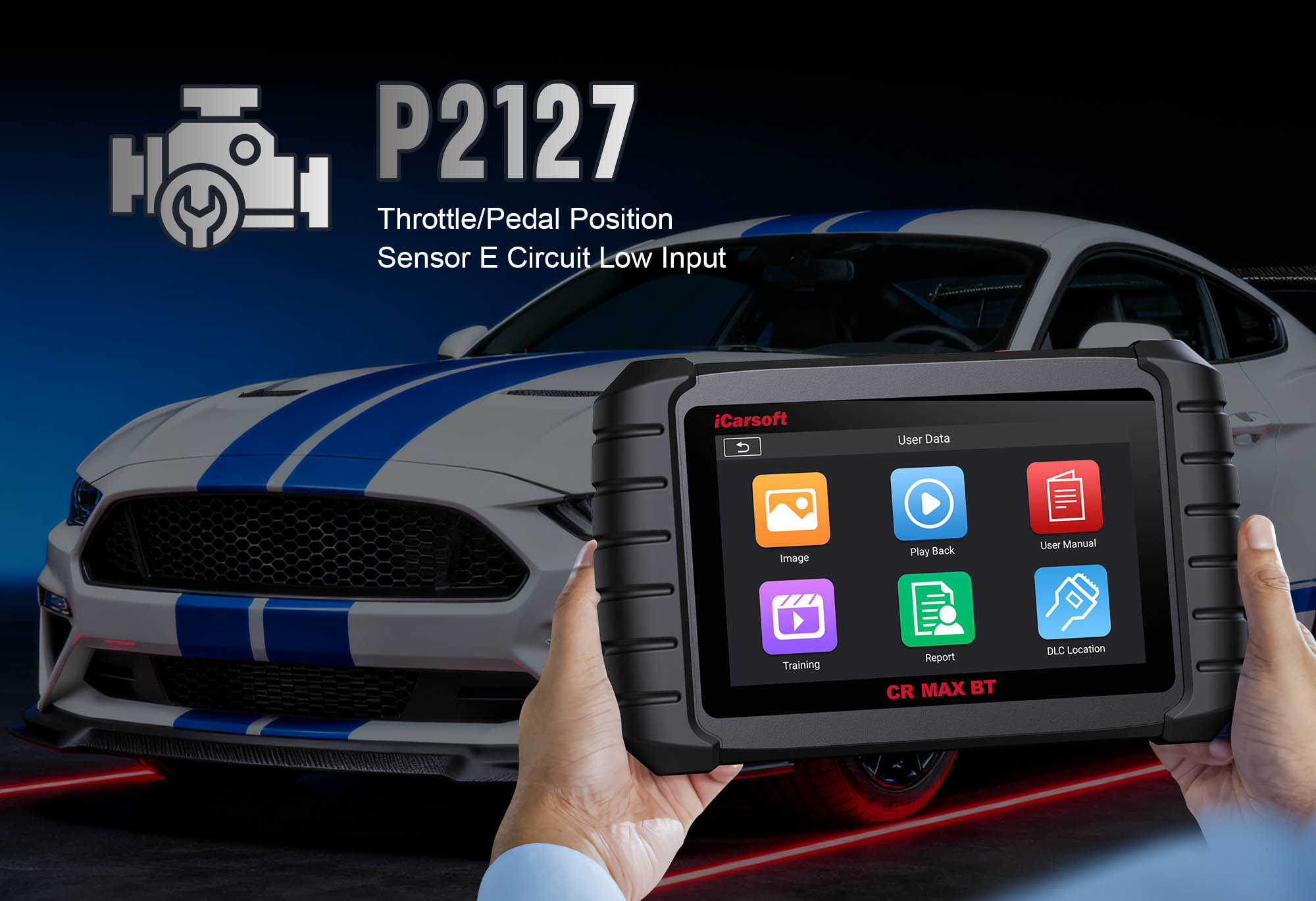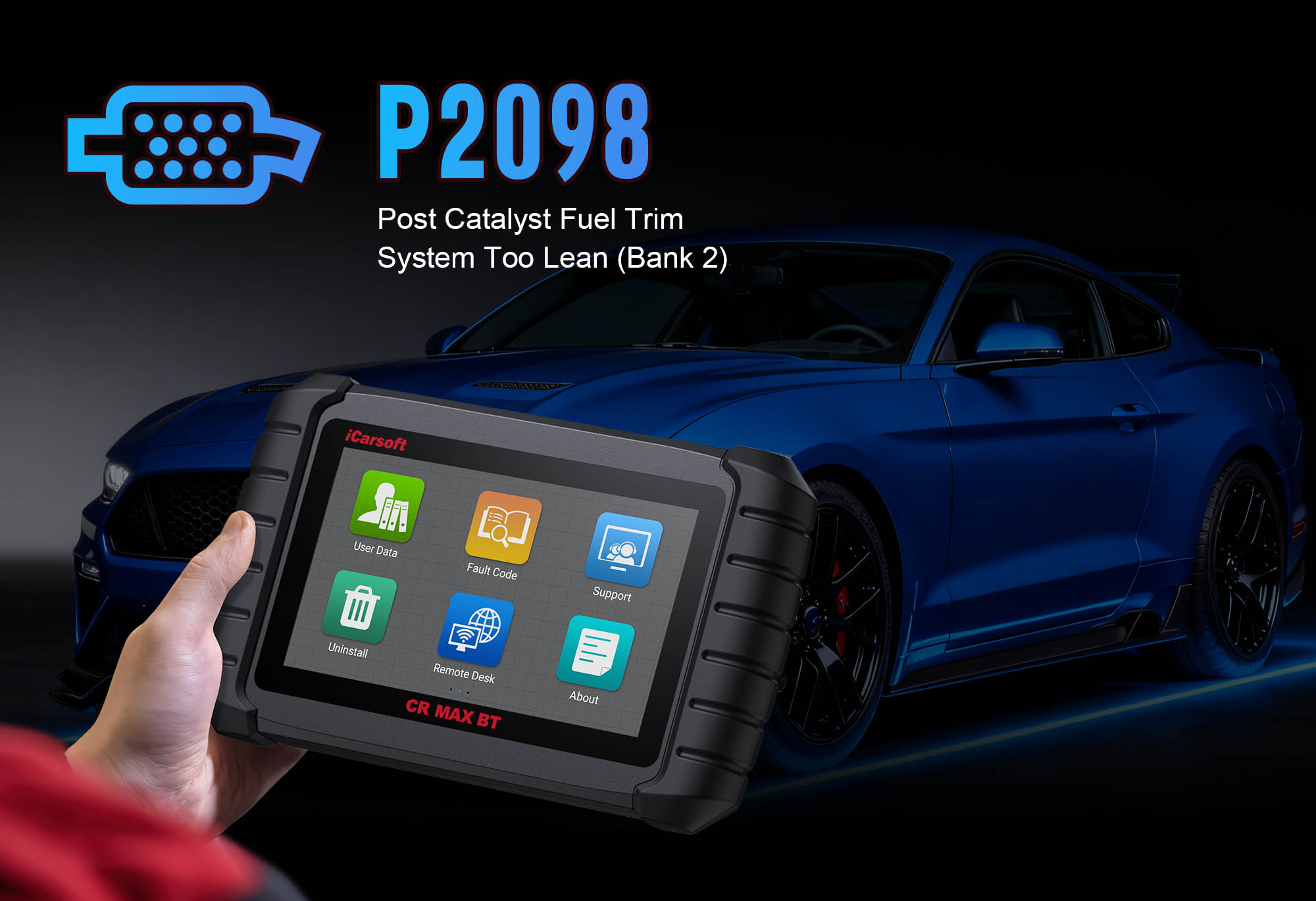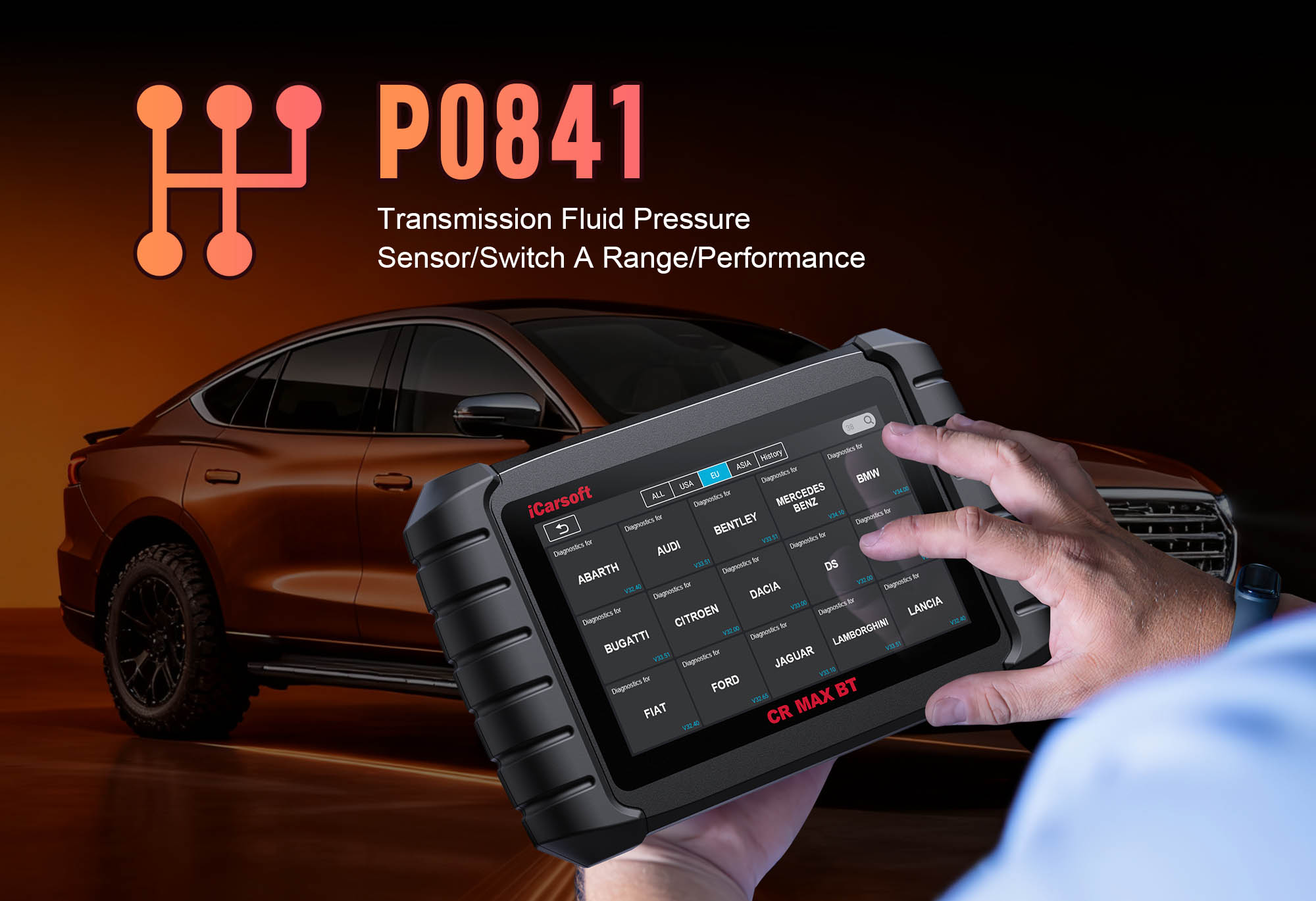Diagnose & Clear P0461 with iCarsoft CR MAX BT
If your vehicle’s fuel gauge fluctuates erratically, stays stuck on "full" or "empty," or triggers a "Fuel Level Warning" even with a full tank, a diagnostic scan will likely return P0461. This OBD-II code stands for "Fuel Level Sensor Circuit Range/Performance"—a fault targeting the fuel level sensor, often integrated with the fuel pump assembly inside the tank.
The ECM relies on the sensor’s data to calculate fuel range and trigger low-fuel warnings. When signals fall outside the normal range (typically 0.5V–4.5V), the gauge malfunctions, leading to inaccurate readings, unexpected fuel shortages, and potential breakdowns. Basic scanners only flag a "fuel sensor issue," but the iCarsoft CR MAX BT with specialized diagnostics solves this. Let’s break down how to resolve P0461 step by step.
Understanding P0461: Causes & Key Symptoms
The fuel level sensor uses a float attached to a variable resistor to measure fuel volume: low fuel = high resistance (high voltage, ~4.5V), full fuel = low resistance (low voltage, ~0.5V). P0461 triggers when signals are too weak, too strong, or inconsistent—indicating the sensor can’t reliably communicate fuel level to the ECM.
Key Symptoms of P0461
-
Erratic Fuel Gauge: The gauge jumps between full/empty, stays stuck at one position, or shows incorrect levels (e.g., "half-full" when empty).
-
Inaccurate Fuel Range: The "miles to empty" display is unreliable, leading to unexpected fuel shortages.
-
Low-Fuel Warning Malfunction: The warning light illuminates when the tank is full, or fails to turn on when fuel is low.
-
Check Engine Light (CEL): A steady CEL illuminates, and some vehicles display "Fuel Level Sensor Fault" on the dashboard.
-
Reduced Fuel Economy (Indirect): Guessing fuel levels may cause overfilling/underfilling, disrupting optimal combustion.
Common Causes of P0461
|
Cause
|
Description
|
|
Faulty Fuel Level Sensor
|
Internal resistor wear, float damage, or water contamination (from tank condensation) causes erratic voltage (common after 80,000–120,000 miles).
|
|
Damaged Sensor Wiring
|
Frayed wires, rodent chew marks, or fuel/moisture corrosion create resistance or shorts, distorting signals.
|
|
Loose/Corroded Connector
|
The sensor’s 3–4 pin connector (on fuel pump assembly or under rear seat) is loose, rusted, or fuel-contaminated—disrupting signal flow.
|
|
Fuel Tank Issues
|
A cracked float, broken float arm, or tank debris (rust, sediment) prevents the sensor from moving freely, causing incorrect readings.
|
|
ECM Malfunction
|
Rarely, the ECM’s internal signal processing circuit fails—misinterpreting normal data as "out of range."
|
Why iCarsoft CR MAX BT Excels at Diagnosing P0461
The CR MAX BT outperforms basic tools with features tailored to fuel level sensor and circuit diagnostics—critical for resolving P0461 accurately:
Wireless Bluetooth Connectivity
Test sensors inside fuel tanks (via rear seat/trunk access) from 30 feet away—no cords hinder under-vehicle or interior work.
Live Voltage & Gauge Tracking
Monitors real-time sensor voltage (0.5V–4.5V) and compares to instrument cluster gauge—flags mismatches instantly (e.g., 4.5V = "full" gauge).
Fuel Sensor Response Test
Simulates fuel level changes (bi-directional controls) to verify smooth voltage adjustment—distinguishes stuck floats from electrical faults.
AutoVIN Identify
Automatically detects vehicle make, model, and sensor specs (voltage range, pinouts) in seconds—no manual diagram lookup.
Circuit Integrity Checks
Identifies resistance, shorts, or open circuits in wiring—pinpoints faults without disassembling the entire fuel system.
Step-by-Step: Diagnose P0461 with iCarsoft CR MAX BT
-
Safety First & Initial Visual Inspection
1. Relieve fuel pressure: Turn ignition "ON," disconnect fuel pump fuse/relay (use CR MAX BT’s Fuse Guide), start engine until it stalls—turn off ignition.
2. Locate the sensor: Use Component Location > Engine > Fuel System > Fuel Level Sensor (part of fuel pump assembly, accessed via rear seat/trunk).
3. Inspect for fuel leaks: Check pump assembly, lines, and connector for stains—repair leaks immediately.
4. Check connector: If accessible, disconnect and inspect for corrosion/bent pins; clean with contact cleaner, apply dielectric grease.
5. Inspect wiring: Follow harness to ECM (check frays/heat damage near exhaust); repair with heat-shrink tubing.
-
Connect the Tool & Confirm P0461
Plug CR MAX BT into OBD-II port, power on, select AutoVIN Identify to retrieve specs. Navigate to Engine > Fault Codes > Read Codes to confirm P0461. Tap Code Details for vehicle-specific insights (e.g., "Toyota: Fuel Sensor Expected 0.5–4.5V, Actual 0.2V") and check related codes (P0462, P0463).
-
Monitor Live Fuel Level Data
1. Reconnect fuel pump fuse/relay, add 5–10 gallons of fuel (if low) for measurable level.
2. Navigate to Engine > Live Data > Fuel System > Fuel Level Sensor—monitor two metrics:
- Voltage: Should read ~0.5V (full) to ~4.5V (empty); <0.3V or >4.7V confirms P0461.
- Gauge sync: 4.5V = "empty" gauge, 0.5V = "full" gauge; mismatches = sensor/ECM fault.
3. Float test: Rock vehicle gently (engine off)—voltage should change 0.1–0.3V; no change = stuck float.
-
Test Fuel Level Sensor Circuit Integrity
Turn off engine, disconnect sensor connector:
1. Power wire test: Set multimeter to "DC Voltage"—touch power pin + ground. Ignition "ON" = 5V; 0V = blown fuse/broken wire.
2. Ground wire test: Set to "Ohms"—touch ground pin + chassis. Normal = <1 ohm; >5 ohms = poor ground.
3. Signal wire test: Check continuity between signal pin and ECM—no continuity = broken wire.
4. Resistance test: Check power-signal pin resistance; values outside specs (100–1,000 ohms at half-tank) = faulty sensor.
-
Test the Sensor & Fuel Tank Components
1. Sensor bench test:
- Remove fuel pump assembly (follow torque specs). Disconnect sensor from assembly.
- Manually move float up/down—monitor voltage with CR MAX BT; no smooth change = faulty sensor.
2. Inspect float: Replace cracked or debris-covered floats; check for broken float arms.
3. Tank debris check: Use videoscope extension to inspect tank interior for rust/sediment; clean with fuel system cleaner.
-
Repair & Clear P0461
- Stuck float/debris: Clean float/tank; replace cracked floats with OEM parts.
- Wiring/connector: Repair frays with heat-shrink; clean fuel-contaminated connectors.
- Faulty sensor: Replace sensor or integrated fuel pump assembly (use Part Lookup—e.g., Bosch 0280158054); torque to specs.
- ECM malfunction: Consult dealer for reprogramming (last resort—confirm with ECM Communication Test).
Clear code: Go to Engine > Fault Codes > Clear Codes and confirm P0461 is deleted.
-
Validate the Repair
1. Monitor post-repair data: Confirm voltage reads 0.5V (full) to 4.5V (empty) with smooth changes as fuel is used.
2. Test drive 30–40 minutes: Include highway driving (to use fuel) and slope parking (to check float movement).
3. Fuel range check: Verify "miles to empty" updates correctly with fuel level drops.
4. Save report: Use History & Report to document fault, repairs, and post-repair data.
Preventing P0461 Recurrence
-
Regular Sensor Checks: Use Service Reminder to test the fuel level sensor every 50,000 miles—catch early resistor wear.
-
Fuel System Maintenance: Add fuel system cleaner every 15,000 miles (per Maintenance Schedule) to prevent tank sediment buildup.
-
Avoid Overfilling: Stop refueling at the first pump click—overfilling damages the sensor float and causes fuel contamination.
-
Lifetime Free Updates: Use One-Key Upgrade (Wi-Fi) to add new fuel system diagnostic features as manufacturers release them.
Conclusion
P0461’s fuel level sensor fault risks leaving you stranded with an empty tank. The iCarsoft CR MAX BT simplifies diagnosis with wireless convenience, live voltage tracking, and circuit tests—ensuring you fix the root cause (sensor, stuck float, or wiring) instead of guessing.
With global vehicle coverage, 40+ service functions, and lifetime updates, the CR MAX BT is a long-term investment in fuel system reliability. Restore accurate fuel gauges, eliminate range anxiety, and drive with confidence—all with one professional-grade tool.





